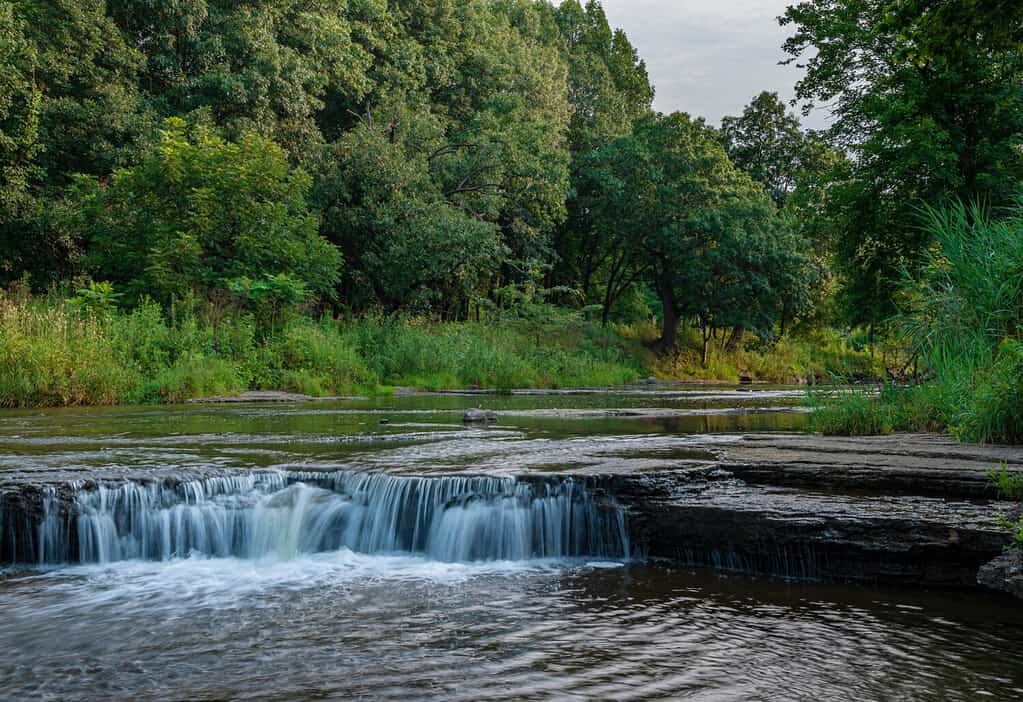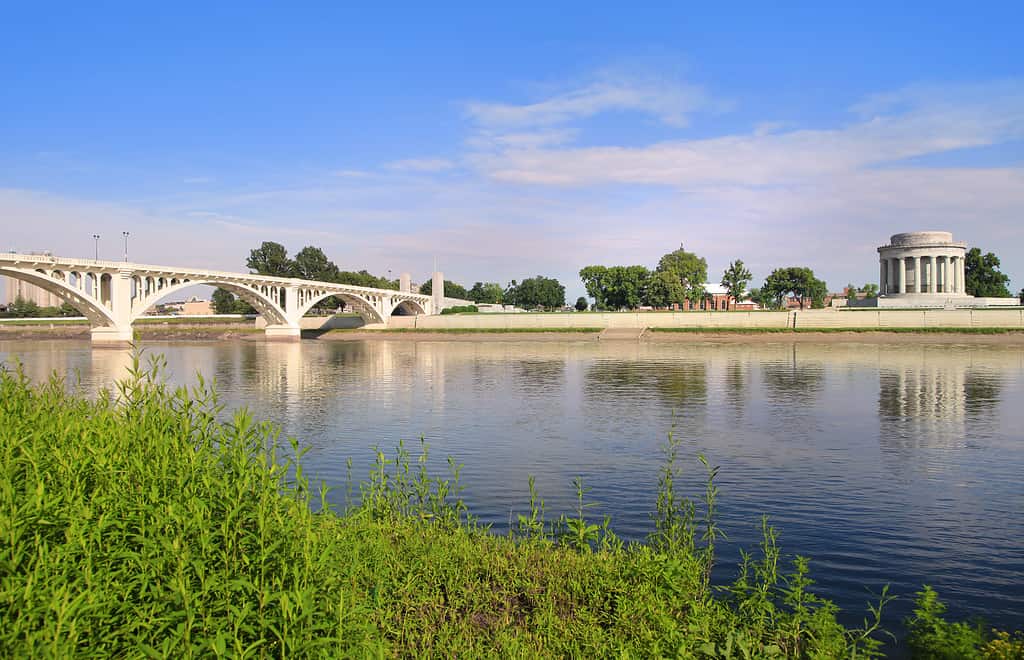The Illinois River watershed is the backbone of Illinois’ prairie climate and an integral part of the state’s economy. The river cuts diagonally through the state’s north until it ends at the Mississippi River, north of St. Louis, MO. How does the Illinois River compare to other tributary rivers of the Ohio or Mississippi River, and how wide is it at its widest point?
How Wide Is the Illinois River at Its Widest Point?

An interior tributary of the mighty Mississippi, the Illinois River runs its narrow course from just outside Chicago to just north of St. Lous, MO, where it joins the Mississippi. It appears widest near Rome, IL, where there are several backwater lakes, including Peoria Lake, Upper Peoria Lake, and Goose Lake, located near the Woodford State fish and wildlife area. When measured in Google Maps, this stretch of the Illinois River is about 2.1 miles wide at its widest point.
How Large Is the Illinois River in Volume?
Calculating the volume of a moving body of water isn’t easy. Variations in landscape, water flow, weather, and erosion are constantly changing the water profile of the river. Consequently, water volume for a river is usually calculated in terms of daily discharge measured at a single fixed location.
The U.S. Geological Survey monitors daily discharge numbers taken from a U.S. Army Corps of Engineers station at Valley City, about 62 miles from the mouth of the Illinois River. This station’s average daily water discharge measures 23,280 cubic feet per second. The highest discharge measured at this station was 123,000 ft³/s, while the lowest recorded was 1,330 ft³/s.
Which Main Tributaries Supply the Illinois River?

Prairie Creek (shown here) flows into the Kankakee River, a tributary of the Illinois River.
©Hank Erdmann/Shutterstock.com
The Illinois River is born at the confluence of the Des Plaines River and the Kankakee, just southwest of Chicago. While it is a tributary of the Mississippi, the Illinois River has tributaries of its own in addition to the Des Plaines and Kankakee rivers. These include the Fox, La Moine, Mackinaw, Sangamon, Spoon, and Vermilion rivers.
How Large Is the Illinois River Watershed?
The Illinois River drains water from the north-central portions of Illinois. The size of this watershed is nearly half the size of the state of Illinois and extends into Wisconsin and Indiana. This drainage area measures about 28,906 square miles, over 98% of which is in Illinois.
How Does the Illinois River Compare to the Wabash River?

The Wabash River plays a similar role in Indiana’s ecosystem to that played by the Illinois River in Illinois.
©SNEHIT PHOTO/Shutterstock.com
The Wabash River in Indiana functions in much the same way as the Illinois. However, the Wabash is about 220 miles longer than the Illinois River. The southern border shared by Illinois and Indiana consists of a 230-mile stretch of the Wabash River’s 500 miles. The watershed of the Wabash is larger than that of the Illinois River at 33,000 square miles—nearly the size of Indiana—extending into Illinois and Ohio, where it originates. This non-navigable river completes its journey as it flows into the Ohio River, 25 miles southwest of Evansville, IN.
Wildlife in the Illinois River

Great blue herons thrive in the watershed of the Illinois River.
©flownaksala/iStock via Getty Images
The Illinois River watershed boasts a diversity of wildlife with waters that provide nutrients supporting fish such as carp, catfish, walleye, and striped bass. Turtles and snakes, such as northern cottonmouths and diamondback water snakes, can be found in abundance throughout the watershed. Amphibians thrive in the habitats surrounding the river, and frogs and salamanders can be critical indicators of the ecosystem’s health.
Along the banks of the Illinois River, mammals, such as beavers and otters, make their homes building dams and lodges. Beavers create habitats for other wildlife species that like wetlands, such as ducks, geese, muskrats, etc. Also, birds such as bald eagles and great blue herons find the waters and lands surrounding the Illinois River to be suitable habitats for nesting and hunting.
Why Is the Illinois River Vital?

Tourism along the Illinois River generates money for rural communities.
©Ramblin Rod/Shutterstock.com
The Illinois River is an essential habitat for many species native to the state. Fish and wildlife along the river’s shores depend on these waters and the surrounding watershed for shelter and sustenance. The river and its watershed are essential for migratory birds as they feed and shelter along their routes.
The waters of Illinois provide many recreational opportunities for citizens and tourists, including boating, swimming, and fishing. Also, the surrounding areas offer hunting and trapping opportunities, providing hunters with food and resources. The river also supports area agriculture and local businesses and provides a viable regional shipping network.
Where Is the Illinois River Located on a Map?
The photo featured at the top of this post is © EJ_Rodriquez/iStock via Getty Images
Thank you for reading! Have some feedback for us? Contact the AZ Animals editorial team.






